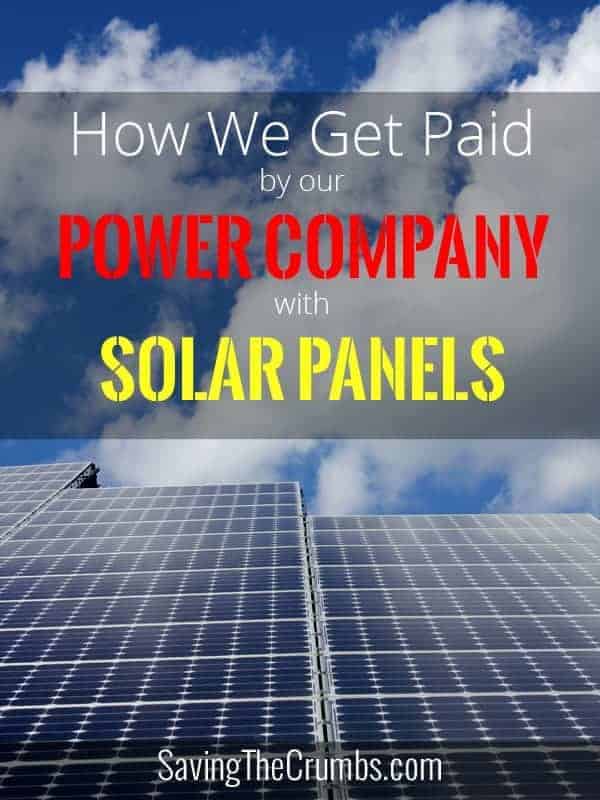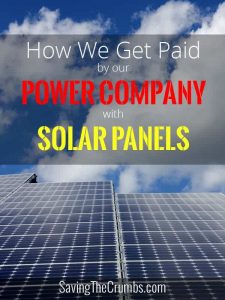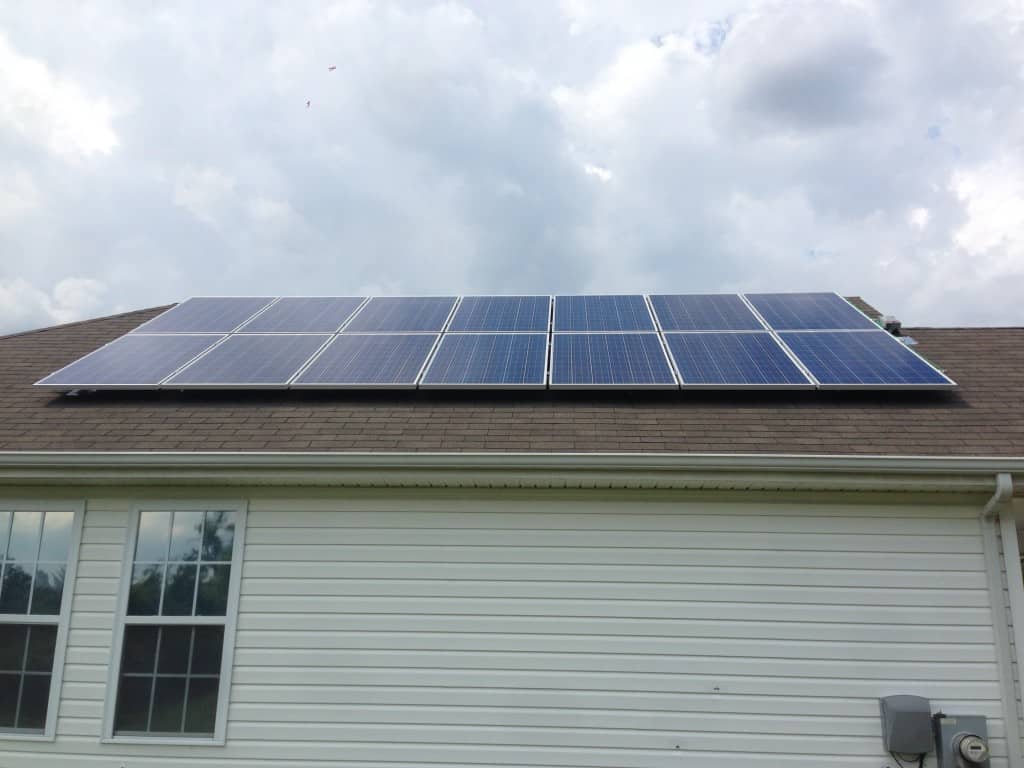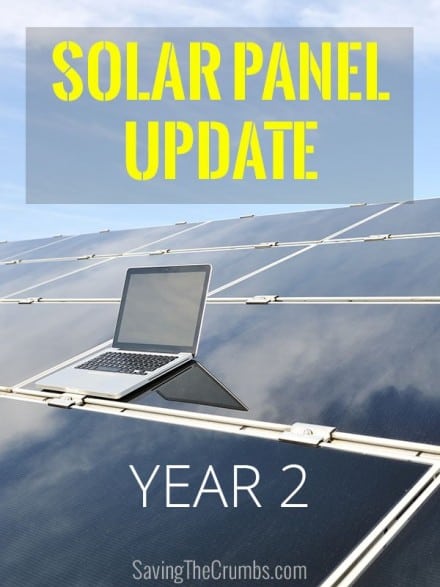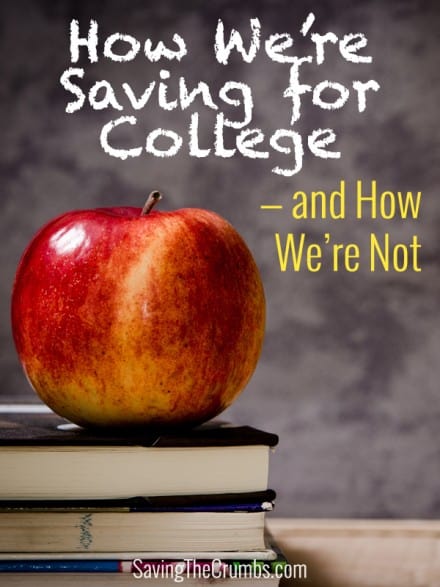What’s the only thing better than saving money on your power bill? GETTING PAID by your power company! As Crumb Savers, we love getting a deal but we love getting paid even more. Previously, we shared in our monthly expenses that we paid approximately $50/month on electricity costs. Now, not only do we pay nothing, we actually EARN around $20 from our power company each month! That’s right, we’ve turned one of the potentially biggest monthly expenses into monthly INCOME instead. How is that possible? Two words: Solar Power.
A Nuclear Power Plant On Your Roof
The sun is a gigantic nuclear fireball approximately 93 million miles away. Everyday, it sends over enough energy to power the entire planet–all life, ecological systems, ocean currents, weather patterns, hurricanes, tornados, and of course, amazing tans–with gobs of extra to spare. And it does this all wirelessly.
Most inanimate objects absorb this energy as heat. Plants capture this energy through the process of photosynthesis to create organic life. Our skin captures it and turns red, then brown, then into skin cancer. Solar panels, thin sheets of silicon, capture this juicy power and use it to excite electrons into rapid motion, more commonly known as electricity.
So rather than burning natural gas or coal or oil, which are actually organic batteries that stored up the sun’s energy many years ago, with solar panels we’re tapping directly, wirelessly into the sun. The efficiency of solar systems have gotten to the point where a system that fits comfortably on a house’s roof is able to generate enough power for most of a typical household’s usage. But for Crumb Savers who master the art of energy conservation, even a small system can cover MORE than all of our household power needs!
How the Numbers Work
The cost of solar is still high relative to traditional forms of power generation, and so to spur the rate of adoption, the US Federal Government is granting a 30% tax credit (direct cash payback as opposed to a tax deduction) through 2016 for the full cost of solar installation. Where I live, there is also an additional $1000 cash rebate from the Tennessee Valley Authority (TVA) to further reduce the cost of installation. Finally, the TVA will also guarantee to purchase 100% of the power I generate from my solar system at the going electricity rate for 20 years, AND for the first 10 years will pay me a premium on top of that. At the time that I got approved for this program, the premium was set at $.04. In other words, I get paid more for the power I generate than what I pay to buy it from the utility. And since current electricity rates will inevitably increase over the years, so will our solar income.
Current electricity rate + $0.04 = Solar income
If you’re interested in this sort of thing, you can read more about the Green Power Provider program here. Of course, this program is specific to my region, so check with your local power company to see what incentives are available in your area.
The system we have is a straightforward grid-tied system (as opposed to off-grid, battery-based) that skips all the mental gymnastics of typical solar systems where you have to adjust your power usage to correspond with peak solar energy production. (“Charge all of your batteries at midday and not at night!”) We simply use power as usual while the solar panels generate power independently and we get paid for every kilowatt-hour of power generated at a specified rate.
To simplify it another way, this becomes a straight return on investment calculation. How many green soldiers will I need to pay for the system upfront, and how much will it make in return?
The Return on Investment
Here’s how the numbers worked out for me:
- I figured that a 3.5 kW system should generate about 100% of the power usage that we use in our home. (Figuring this requires knowing how much energy we use regularly, as discussed in our previous post.)
- A 3.5 kW system cost just under $15,000 all-in after materials and labor.
- With the tax credit and rebate, this cost comes down to about $9500.
- This system should generate $70/month with the premium, or $840/year.
- This equals a 8.8% annual rate of return with this percentage increasing as the base rate of electricity continues to go up.
This is a better return than what many people would get in the stock market, and with a great deal less volatility and risk to boot! Moreover, this has an immediate effect on our monthly cash flow—reducing expenses, increasing revenue so it frees up more cash for other uses.
Oh yeah, and since this is an improvement on my house, it immediately raises the value of our home too!
Some Important Considerations
The numbers work out far better in our favor because we have kept our power use to the minimum. Many homes of comparable size in our area use as much as triple the amount of power that we do. So they would need a system costing upwards of $45,000 in order to cover all of their energy expenses. While the percentages may still work out similarly, that requires a much larger initial cash investment to get the same results. Not many people I know have a spare $45k lying around! I say it’s much better to use less, waste less, save the crumbs, and get farther ahead.
Getting Solar for $0 Down
In a growing number of states, there are solar leasing programs available where it’s possible for you to get a solar system installed at no cost to you while still getting a locked-in reduced power rate for the length of the contract (often a 20-year term). Solar City, by the venerable Elon Musk, was a pioneer in this space, but many other companies have jumped into the fray now.
My parents, who live in Southern California, have gotten set up for a program like this with SunRun where their monthly energy bill is locked-in at a reduced rate while they pay $0 for SunRun to install the system and maintain it. So they don’t have to pay anything except allow SunRun to use their roof space, for exchange of a guaranteed reduced electricity rate. Doesn’t sound like a bad deal to me!
The main difference with these solar leasing programs versus what I’ve done is that the homeowner doesn’t actually own the system. They are basically renting out space to the solar company to install a solar power plant in exchange for a guaranteed lower cost of electricity. The risk is greatly reduced because the homeowner doesn’t assume any of the responsibility of the system (maintenance, insurance, monitoring, etc.), but the benefits are also reduced because the rate of return will be lower over the long-term. (The energy bill will almost never go to $0.)
Quick Peek
Contrary to what some of you may be thinking, I am not a tree-hugging environmentalist. I like that solar energy is helpful to the environment, but the numbers are what excite me most about solar power. (Did I mention that we get PAID by our power company???) So here’s a quick peek at our power plant, soaking up all the juicy sunlight:
What’s your experience with renewable energy? Would you try this for your home?

